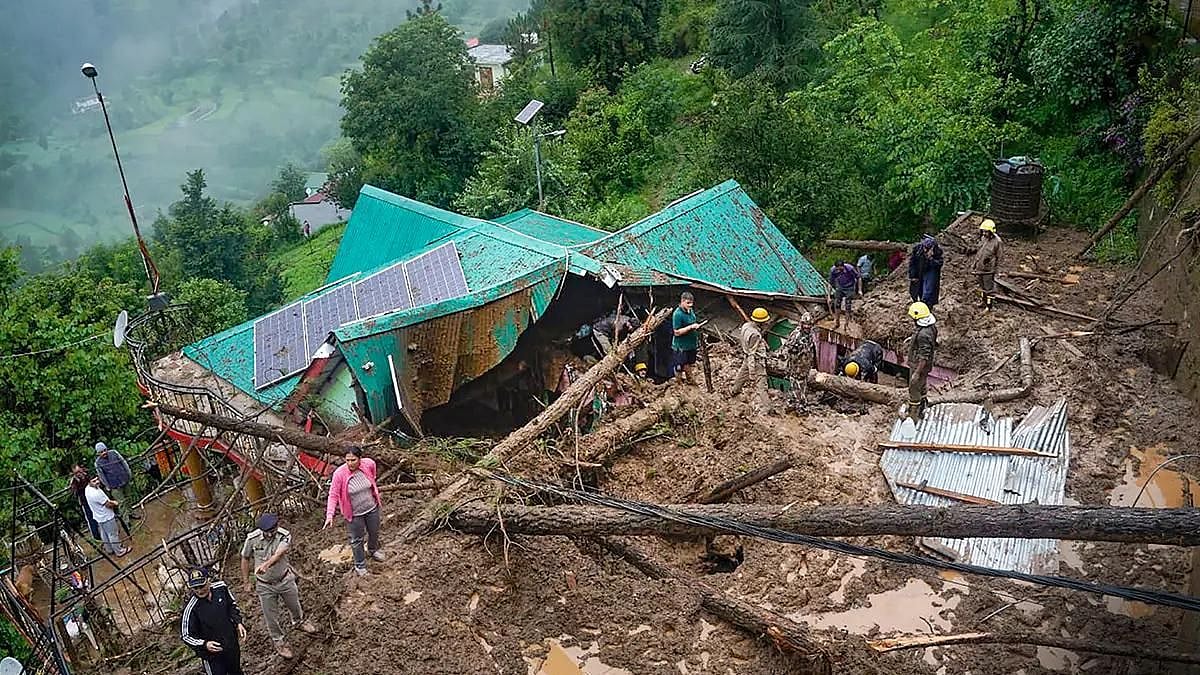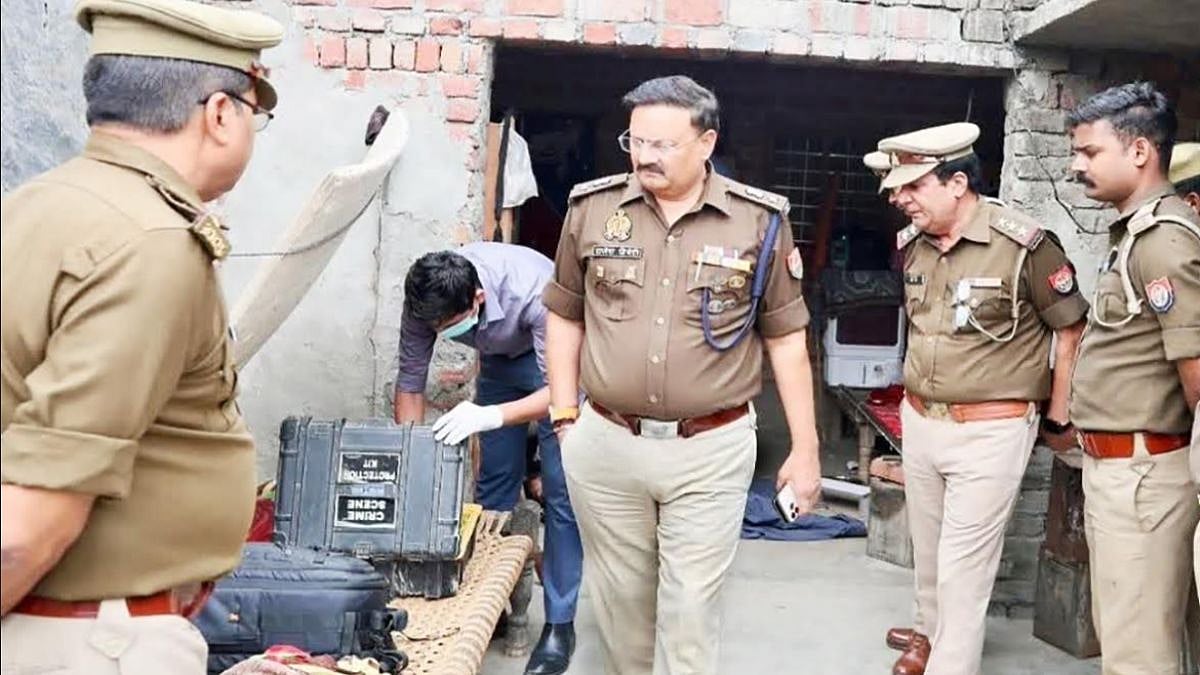On a WhatsApp group of motorcycle riders, members were posting requesting updates on riders who had decided to ride to Ladakh on their adventure motorcycles, unaware of the drama that would unfold; fortunately, they are safe.
It has taken a week to turn an otherwise uneventful holiday season into the environmental disaster unfolding in front of our eyes. We have seen images of missing lengths of road, bridges collapsing and whole hillsides crumbling. It is not an entirely new sight, but definitely much more frequent now than say two decades ago. Looking at the news on newspaper apps and social media platforms such as Twitter and Instagram Reels, the images coming in from Himachal are scary to say the least — unprecedented rains have unleashed flash floods and caused widespread damage to property, loss of life, and stranded locals and tourists alike, rendering both rescue and transport of everyday supplies very difficult, if not impossible.
As an architect I have been working in the hills for a long time. My association with the hills goes back to Bhutan and my childhood. However, the first time I really understood buildings in the hills was as a research assistant to the legendary Professor MR Agnihotri, an architect, a climber and an educator unlike any I have ever met.
We trekked to villages in the Uttarkashi region to review reconstruction 10 years after the catastrophic earthquake of 1992. We spent four months on the project, half in the field and half at our desks writing a report for the World Congress on Disaster Mitigation later that year.
It was a fascinating experience, and one I still hold very dear. To be introduced to the hills in an academic frame, by a man so widely travelled and experienced, was indeed very fortunate.
One of my most startling discoveries on that project was at a village called Maneri, upstream from the Uttarkashi on the Bhagirathi, that is the location of a small dam for hydroelectric power generation. Maneri sits on the bank across the dam from the road — a village that was entirely made of “pukka” houses with reinforced concrete “pillar” and “lintar” construction, I would conjecture that these were built with steel and concrete “arranged” for from the project’s massive supplies, on mutually beneficial terms. It will not surprise you then to learn that one village suffered 100% destruction during the 1992 earthquake and was completely wiped out; we were told that every person died.
But you are going to say, that is an earthquake, so how is that related? Here is why. Concrete, and especially Reinforced Cement Concrete — RCC for short, “pillar” and “lintar” in local parlance — is a very carefully engineered technology. And while rule-of-thumb applications may be ok in areas of low risk, engineering negligence or complete disregard can be catastrophic in situations of crisis. We are seeing this played out, to our horror, on news channels these last few days. RCC that has not been engineered, and designed to codes, is a veritable death trap.
Also the false notion of “pukka”, secure and technically sound, as claimed by a local “contractor” who uses a 3ft x 3ft foundation for columns in any height of building, somehow emboldens people to build four and five floors in places their local building systems would not allow them to go beyond two. It’s profitable, for sure — but the risk is never apparent till an event like the rains of the last few days occurs.
When I was constructing my first building in Almora many years ago, I got a call from a very worried contractor, asking if my structural drawings were ok — he had never seen footings as large or columns with as much reinforcement as my drawings carried. He was worried that he wouldn’t be able to bear the cost at the rates he had quoted, and was requesting me to reduce quantities. No one uses that much steel here, he pointed out.
I recall having a flashback to my walking through the village of Maneri in 2002. It was because of these ideas that hundreds had lost their lives on that fateful night.
No, we didn’t reduce the structural steel requirement that was designed for Earthquake Zone 5 — the highest code. We had a meeting with the clients, explained to them the nuances of the issue, and got an agreement to pay the cost increase.
Why is this important?
Our hills are being filled with buildings — built by local masons who masquerade as contractors, and are happily employed by locals and businessmen who want the “cheap and best” solutions. As a modern society, engineering and engineers and their tools and technologies imbue us with a certain sense of capability, nay, dominance over the planet and its natural systems. Over the last century we have come to believe that technology is all-powerful and can be used to achieve great things — which it can! But technology is also expensive, and prohibitively so, and as scale and size increases, the cost increase is not linear but multiple, as sizes and spans scale up.
Also the not so pleasant flip side is that technologies, if not engineered properly and executed to specifications, can result in catastrophic failure. And the collapse, when it does occur, as we have seen played out on TV in the case of bridges and houses, is almost instantaneous and complete.
During those four months, while visiting and studying the remains of the earthquake and the reconstruction, there were a few simple lessons I learnt — the most important of which is, do not build near a water channel. Rivers and streams in the hills can be in spate without warning; all it needs is a day of rain.
Second, do not cut at the feet of the mountain, the top will slide down. This one seems to be a favourite of our highway construction crews to ignore with their new-found love for expressways and road-widening.
Third, try to build with systems of construction that are local and respond, and respect the local architecture; there’s knowledge there that you can use.
And the last, also if you are building in the hills — respect nature, let it surround you, don’t build more than you need, don’t take without giving back. Nurture the forests and trees as much as you can, don’t make it look like South Delhi or GK or Shimla!
These simple ideas have stayed with me. They have of course grown more nuanced and gained from practice and observations. But decades later they still are a useful guide and entry point into understanding and building in the hills.
These ideas and principles are not new. But the refusal to pay heed and the ignorance surely is!
There is talk of sustainability, carbon neutral, net zero, platinum rating etc. which is all very fine, But these buildings sit in a wider world, with hills, rivers, forest cover, climate change, earthquakes — and the occasional flood. These are things few architecture schools even talk about or discuss. Architecture and engineering, by their very nature, will interfere in the ecological systems of the planet. However, the hope is that we can curtail the extent if we follow these ideas.
The videos in the news are scary, and the loss of life and property is sad, but this is not nature’s fury, this is just human deafness and financial greed. While no power we know will intervene when our time to exit the planet arrives, we can however act responsibly and leave a better planet than we inherited.
Henri Fanthome, an architect who trained at the SPA, lives and works out of Mehrauli, Delhi and writes about design and urban spaces











